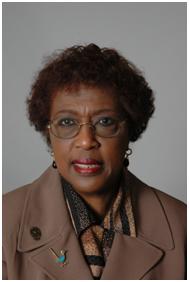EIGHTH EPISCOPAL DISTRICT
HEALTH MINISTRY (VOL 10)

Dr. Patricia D. McKenzie
Episcopal Coordinator for Health Ministries
PART I.
NATIONAL HEALTH OBSERVANCES FOR OCTOBER
OCTOBER IS DOMESTIC VIOLENCE AWARENESS MONTH AND THE FOCUS OF A CHURCH MINISTRY
As presented in “The Book of Discipline of the CME Church Revised 2022:
A. Domestic Violence Awareness.
- Chapter 36, Paragraph 554, p.156-.
Each local church is encouraged to establish a Domestic Violence Awareness Ministry; and /or partner with a local Domestic Violence Shelter Program in order to create awareness, education, direct services, prevention and crisis intervention”” (with a list of other goals).
B. Connectional Domestic Violence Awareness Month.
- “Chapter 43, Paragraph 712, p. 178-
Each local church is encouraged to participate in and/or sponsor Domestic Violence Awareness Month Activities in October of each year “(with outreach focus).
Source One-“The National Child Traumatic Stress Network (NCTSN) https://www.netsn.org/resources.
FACTS:
“National Domestic Violence Awareness Month began in October 1989. Domestic violence is prevalent in every community and affects all people regardless of age, socio-economic status, sexual orientation, gender, race, religion or nationality. Physical violence is often accompanied by emotional abuse and controlling behavior as part of a larger systematic pattern of dominance and control. It can result in physical injury, psychological trauma and even death. An average of 20 people are physically abused by intimate partners every minute. This equates to more than 10 million abuse victims annually. 1 in 3 women and 1 in 4 men have been physically abused by an intimate partner and 1 in 5 women and 1 in 7 men have been severely physically abused by an intimate partner. NCTSN has compiled a list of helpful resources for parents and care givers, children and teens, educators and school staff.
Resources: Age-Related Reactions to a Traumatic Event:
PRESCHOOL
and young school-age children may experience a feeling of helplessness and often can’t describe the events. Children might not be able to fall asleep on their own or might not be able to separate from parents at school. May lose some speech and toileting skills; sleep may be disturbed by nightmares.
SCHOOL
age children may show persistent concern over their own safety. May experience guilt or shame over what they did or did not do. Teachers report greater difficulties concentrating and learning. Will often complain of headaches or stomach aches.
ADOLESCENTS
May display feelings of fear and concern of being labeled abnormal or different from peers. May withdraw from family or friends. May express fantasies of revenge. Some engage in self-destructive behaviors.
- 1. For Young Children-Parent must provide reassurance that the child is safe. Parents/family/teachers help them verbalize feelings and provide them with a sense of security; may have to accept regression of developmental skills for a time.
- 2. For Adolescents-Family can encourage discussion of the event and feelings; help them understand “acting out” behavior as an effort to voice anger; discuss thoughts of revenge and help formulate constructive alternatives that lessen the sense of helplessness. When this happens the entire family is affected and all must work together to help each other cope. Another helpful resource is ”A Parent’s Self-Care and Self Reflection-being able to cope with your stress is good for you and the child involved.
There are ten Fact Sheets in the Series, visit www.nctsn.org/content/resources.”
PART II.
HEALING AIDS FROM THE BALM IN GILEAD
Source:
Click on Education and Inspiration and find to topics-Sunday Morning Health Corner and Resources
Facts:
PART III.
TEXAS HEALTH AND HUMAN SERVICES
A. Family Violence Program
FACTS:
- National Domestic Violence Hotline—800-799-SAFE (7233)
- Telecommunications Device for the Deaf : 800-787-3224. Text “START” to 88788
- Chat Live Online: the hotline.org”
Discover more from EIGHTH EPISCOPAL DISTRICT
Subscribe to get the latest posts sent to your email.